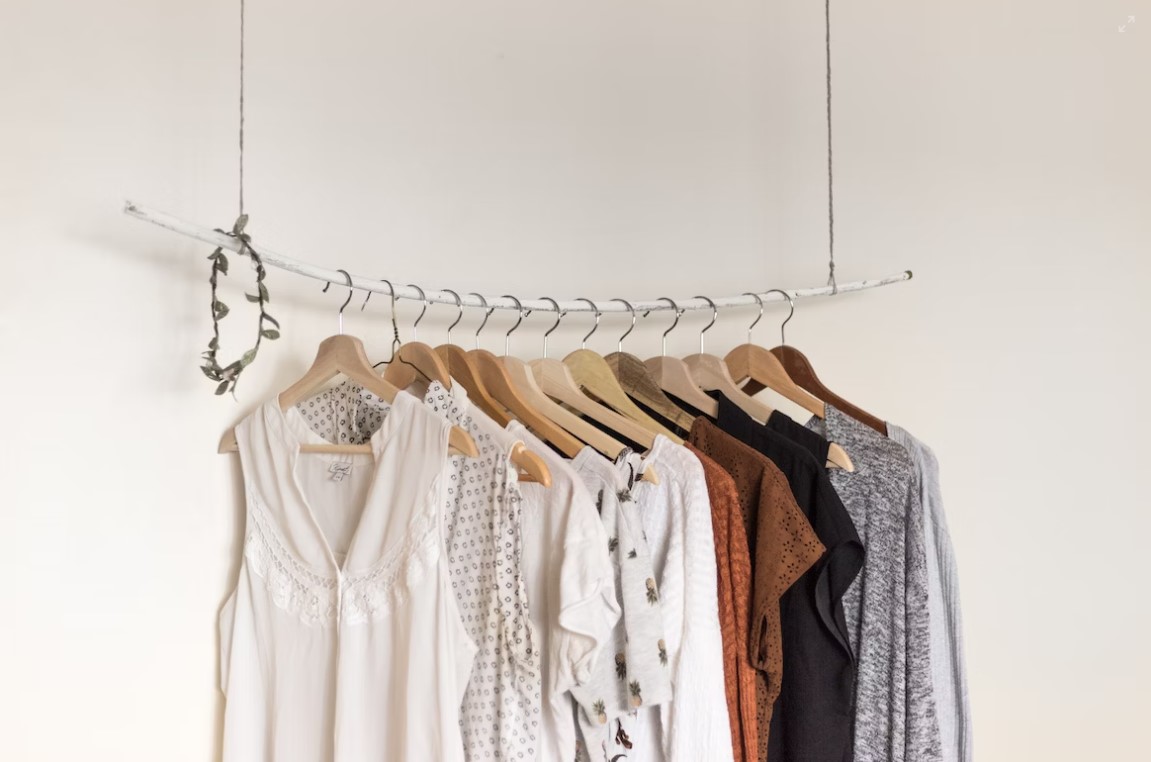23 May Legal Considerations for Fashion Businesses
 Author: Zeinab Farhat, Progressive Legal
Author: Zeinab Farhat, Progressive Legal

The fashion industry is one of the world’s most lucrative industries. Unlike other industries such as healthcare, there are no set laws regulating the industry as a whole. Instead, the fashion industry is governed by an amalgamation of different laws and legal considerations.
If you are a fashion business or working in the industry, it is important to be across some areas of legal risk as many small to medium business enterprises are not sufficiently well versed in what may expose them to legal liability / and or their legal rights.
This article will consider: intellectual property, commercial law, consumer laws, privacy, technology, data, and employment, as they relate specifically to the fashion industry.
Intellectual Property in Fashion Businesses
Intellectual Property is arguably the backbone of the fashion industry. The purpose of intellectual property law is to protect creative processes and ideas, and as such, having strong intellectual property protections in place to protect the brand’s IP is essential.
Intellectual Property is an extremely wide area of law and every area contained within in it cannot be summarised in detail for present purposes. However, we have provided a brief overview of each area of IP and how this intersects with fashion below:
Trade Marks
Trade marks are essential for a fashion brand as they represent your brand in the marketplace and are often informally referred to as a “badge of origin”. Trade marks serve to differentiate your business and brand from competitors who offer the same goods and or services as you. A trade mark can be a myriad of things such as a brand name, tag line, logo, letter, smell, sound, colour, phrase etc – anything that distinguishes the brand from others.
Some examples of current registered well-known Australian fashion trade marks include:
- Trade Mark 325927 which is registered in classes 3, 14, 18 and 25 and is owned by Guccio Gucci SpA:
- Trade Mark 159119 which relates to the words “CHRISTIAN DIOR” and is registered in class 3 and is owned by Parfums Christian Dior.
- Trade Mark 1223241 which relates to the words “C&M” and is registered in class 25 and is owned by Camilla and Marc Operations Pty Ltd.
- Trade Mark 824598 which is registered in classes 18 and 25 and is owned by Burberry Limited:
Why do I need a registered trade mark for my brand and what happens if I have a unregistered trade mark?
It is important to obtain a registered trade mark as this provides you with the exclusive right to use that trade mark in the classes in which it is registered. Registration also serves as proof of ownership should a competitor allege that you have copied their trade mark. As such, registration confers you with strong rights with respect to enforcing and defending your trade mark rights.
Further, trade mark registration is actually a form of personal property. As such, you are able to sell or assign your trade mark. If you later decide to sell your business, your registered trade mark will form part of your IP portfolio – or the “goodwill” of your business. To this end, your trade mark also (generally) carries creative and monetary value.
Where you have a trade mark that is not registered, you have limited common law rights where you are able to demonstrate that:
- your goods have a reputation in the market in which you trade; and
- the unregistered mark is recognisable as your brand among consumers.
In such circumstances, it may be the case that where another trader is using the same or similar mark, they can be prevented from doing so either by claiming misleading or deceptive conduct under the ACL, or that there is an actionable case under the tort passing off.
Copyright
Copyright protects the expression of ideas and applies to artistic, literary, dramatic, and musical works. Copyright also protects other works such as sound records, cinematograph films etc.
In the context of the fashion industry, copyright can subsist in a wide range of contexts, such as and not limited to:
- Sketches of clothing (where they have not been industrially applied): Where the sketches have been industrially applied, they may still receive copyright protection if they are considered a work of artistic craftsmanship. For an explanation of this, see our article on works of artistic craftmanship here.
- Campaigns (including audio-visual advertisements): It is very likely that as a fashion brand, you have published, or are in the process of publishing campaigns to promote your work. This may include: videos, online posts, online advertisements, television ads and so on. In such instances, there may be a combination of different copyrightable works which exist within a single work. For example, a television ad may include copyrightable works in the form of:
a. any lyrics contained within the music played during the ad – this is considered a literary work;
b. any choreography in the ad – this is considered a dramatic work;
c. the actual music being played – this is considered a sound recording and or musical work; and
d. the actual cinematograph film itself.
What rights do I have as a copyright owner?
Where the work is an original work, you have the exclusive rights to:
- reproduce the work;
- publish the work; and
- communicate the work to the public.
If I have independent contractors assisting, do I own the copyright in the work they produce?
The general position is that independent contractors own copyright in the works they produce unless a contrary intention is expressly made. That ought to be done in a written agreement indicating that you own all copyright works created during the course of the engagement. Importantly, the word assign needs to be expressed as per the Copyright Act 1968 (Cth). See our article here on making sure you have the copyright assigned.
Designs
Designs protect the visual features of a protect such as the pattern, shape, configuration or ornamentation of a product. There is a complex intersection between copyright and designs. Put simply, whilst you can rely on copyright for the initial sketches of your products, copyright may be lost where the work is industrially applied (i.e. sold in 50 or more articles).
Do I register designs?
You are required to register your designs with IP Australia if you wish protection under the Designs Act, which you can do online here.
Prior to making your application, you should obtain legal advice as to whether you have a registrable design so as to minimise the likelihood of a failed application. Best to get legal advice first before doing this.
What happens if I make a design public prior to registration?
If you make your design public prior to lodging an application, this may impact your ability to secure registration of the design. However, a grace period has been introduced in order to counteract this. The grace period came into effect on 10 March 2022, and only applies:
- where the application was filed on or after 10 March 2022;
- disclosures that occur on or after 10 March 2022.
As such, you need to submit your application with 12 months of making the disclosure in order to rely on the design grace period.
Patents
A patent protects new inventions like processes, methods, devices and substances. In order for a patent to be granted it has to be:
- novel (i.e. new);
- useful;
- inventive; and
- a suitable subject matter.
What cannot be patented?
You cannot patent human beings, artistic creations, mathematical models, or other mental processes.
Do I register patents?
Yes, like designs you can register a patent online here. However, it is a complicated process to get correct, so best to get expert legal advice first and even have them file the application for you.
Grace period for patents
A grace period applies to patents but double check to make sure as this can be fatal otherwise if you miss the deadline.
Commercial Law in Fashion
There are various facets of commercial law fashion businesses need to consider:
Choosing the best Business Structure
A lot of fashion businesses, particularly in the early stages of selling their products, make the fatal mistake of not moving to a separate legal entity fast enough. As such, many begin as sole traders and forget to change when the time is right. The effect of this is such that the risks inherent within being a sole trader are not fully comprehended.
Many fashion businesses start as a hobby but do not realise that the structure should change as the business grows quickly. There can be serious legal and financial/tax consequences if they do not incorporate fast enough. As a sole trader, you and the business are one and the same. The same principle applies for partnerships. However, an additional element of risk exists with partnerships – you are jointly and severally liable for your partners business decisions.
Like all businesses, it is essential that you consider which business structure best suits your brand. In most cases, the default is to incorporate as a company. The benefit of an incorporated company is that it minimises your legal liability as you are not (generally) personally liable for the company. You are, however, bound by your duties as a director pursuant to the Corporations Act 2001 (Cth).
Other business structures include:
- sole trader;
- partnership;
- trusts;
- co-operatives; and
- joint ventures
Documents you should have in place
It is recommended that you have a lawyer draft up the following documentation for your business:
| Type of Document | What it does |
| Terms and Conditions/ Terms of Business |
|
| Disclaimers/ Waivers |
|
| Manufacturing Agreements |
|
|
Distribution Agreements
|
|
| Supplier Agreements |
|
| Deed of Assignment |
|
| Deed of Confidentiality |
|
| Shipping and refund policies |
|
Consumer Laws in Fashion
As a fashion label, it is essential that you have a basic understanding of the Australian Consumer Law (“ACL”). The ACCC has an extensive bank of information pertaining to the ACL, see for example, or the following guide for small businesses.
For the purpose of a fashion company, it is important to be aware of the following consumer rights when purchasing products:
- that the product is of acceptable quality;
- that it is fit for a particular purpose; and.
- that it matches the description.
As a result, when creating your clothing or accessories, you need to be mindful of how the ACL operates to provide consumers with consumer guarantees relating to your products.
Contract Laws – Unfair Contract Terms
Australia has a wide unfair contract terms regime which is set to strengthen on 9 November 2023. Pursuant to this regime which operates under the ACL, if you are an individual or corporation, you may be liable to severe pecuniary penalties where it is found that your contract terms are unfair.
We have a long form article explaining the nature of unfair contract terms here [insert link].
Privacy, Technology and Data in Fashion
If you operate websites or social media pages you should also be mindful of your privacy obligations. For example, it is best practice to have a privacy policy in place which outlines what personal information is obtained from an individual and how it is used when they access your website or otherwise engage your services.
If your business is operating in Australia and has an annual turnover of more than $3 million, you are legally required to have a privacy policy.
Employment in the Fashion industry
Having written employment contracts in place for all employees is extremely important. This is particularly true where you have a mixture of casual, part-time and full-time employees.
Having robust and legally drafted employment contracts that cover amongst other things, intellectual property of the business, confidentiality, anti-compete and anti-poaching terms can be extremely valuable to protect the business from future attack.
If you have a part-time employee who does not have a contract in place governing their employment, it is then assumed that the employee is a casual employee. As there are considerable differences in entitlements for casual, part-time and full-time employees, you should be across having employment contracts in place for your workers. It’s one of those mistakes you only make once.
The other thing to remember is that you are bound to have less issues when you have comprehensive legally drafted employment contracts for the business. Otherwise, you’re just asking for trouble.
Key Takeaways
Understanding the legal framework in which fashion businesses operate is vital to ensuring that you minimise legal and commercial risk. Without limitation this includes:
- intellectual property;
- commercial law;
- consumer law;
- privacy; and
- employment.
We are experts in assisting fashion brands protect their business and their owners in areas of structure, intellectual property protection, commercial, privacy, workplace and dispute resolution. Give us a call or fill out the form on this page to discuss your legal needs with an experienced lawyer.
Tailor Made Legal Documents
We can provide you with tailored Legal Documents in a number of areas including: Intellectual Property Law, Commercial Law, Privacy Law, Workplace Law, Corporate Law, and Litigation / Dispute Resolution.
Click here to request a fixed-price Legal Document and have a look at the range of different documents we can help you with.
- 15 September, 2024
- 17 July, 2024

Zeinab has completed her Arts Law combined degree at the University of New South Wales. She helps Progressive Legal’s clients with their commercial, corporate and intellectual property protection. Zeinab enjoys building relationships with clients as well as co-workers, and believes a great sense of humour is vital.






